The Scuba Diving Fin
Types And Styles; Full Foot vs. Open Heel
One of the most important pieces of dive gear is the scuba diving fin.
Without it, we'd be stuck underwater like a lead balloon. With it, we float along and leisurely look at all the wonderful sights underwater through our masks.
There are lots of styles and brands to choose from when it comes to dive fins.
New technology and advances in engineering has given the diver more choices when it comes to choosing a scuba diving fin.
Nevertheless, the basic paddle fin still remains the most common. Here's a guide to help you choose the right type and style of dive fins for you.
(For more information on fins, take a look at our Fin and Booties Buyers Guide.)
Types of Scuba Diving Fins

There are two basic types of dive fins: full foot and open heel.
- Full Foot Dive Fins - The full foot fins have a closed heel and are usually worn barefoot. If you get rubbing, you can wear a thin neoprene sock with them.
These fins are only for warm water use since you do not wear a bootie with them.
Full foot fins are less expensive and are usually smaller than the open heel dive fin.
However, don't think of the cheap snorkeling fins that many places rent. You would want the higher quality full foot fin for scuba diving.
My husband and I both use this type of fin and have had no problem with them. One disadvantage is that you do not have dive booties so it is easier to slip when you are on the dive boat. - Open Heel Dive Fins - The open heel fins are worn with neoprene booties. Scuba booties come in a variety of thickness, depending on what type of water you will be diving in. For the Caribbean, a 2-3mm bootie should be more than sufficient.
You need to buy your booties before you buy your fins so you can get the proper fit. This type of scuba diving fin has an adjustable strap that goes around your heel. These can break so it is a good idea to take an extra one with you when you go diving.
The open heel dive fins are the most common type of fin for the recreational diver.
On most of our dives, Tim and I (and many times, the divemaster) will probably be the only ones with the full foot fin while everyone else will be wearing the open heel fin. Just choose whatever you are more comfortable in.
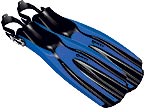
Once you determine which type of scuba dive fin you want, you now have to choose which style of fin you want. For scuba diving, there are three main styles of fins:
Styles of Scuba Diving Fins
- Paddle Fins - These are the most basic and common style of scuba diving fin.
They work similar to the way an oar works moving through the water. They work as an extension of the foot while kicking, giving you more surface area to propel yourself through the water.
The two pictures above are are both paddle fins.There are several variations now available, all made in an effort to maximize efficiency. You will see fins with different placement of channels and grooves, all said to be the most efficient and powerful for the diver.
The better paddle fins will have stabilizing rods on the side of the fin. This is to propel the diver along by channeling the water behind the diver.
Since this type of scuba diving fin doesn't have a learning curve, it is good for beginners. While it is not the most efficient style of fin, it works well and is very versatile. Since it is the most basic of fins, it is also the least expensive.
For the occasional recreational scuba diver, I don't think they would regret purchasing this style of dive fin. Just choose what is most comfortable for you because that will determine the enjoyment of your dive.

- Split Fin - This style of scuba diving fin has a slit down the middle of the fin. The width of this slit can vary a bit, but it is still narrow.
These are said to be the most efficient fins for a diver. They work similiar to the propeller on a boat or airplane. The diver does not push the water behind him, as is the case with the paddle fin, but rather is propelled forward by lift as water moves through the slit.
This makes it easier for the diver to move through the water. The main disadvantage for this style of fin is maneuverability. Divers tend to find it harder back peddle or move around in enclosed areas (such as wrecks or tunnels). They are also not good if you use the frog kick.
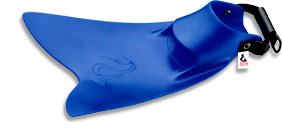
- Force Fin - This style of scuba diving fin is relatively new and made by the Force Fins Company. The force fin has a v-shaped cut in the end of the blade and resembles a fishes' tail. The blade is upturned (away from the bottom of the foot) and is made of polyurethane so it is very light. It is said to be highly efficient and gives the diver greater acceleration speed.
The main disadvantage with this type of scuba dive fin is decreased maneuverability. If you wear booties with the force fins you may have to wear ankle weights, since the lightweight of the fin doesn't compensate for the buoyancy of the bootie.
I've talked to a few divers who have used these and all said they were happy with them. It took them a while to get used to them, but they are now comfortable with the force fin and use them for most of their warm water diving.
So there you have it. The basics you need to know when buying fins. You can become overwhelmed with all the choices out there. If you are just starting out, you are probably best off starting with a paddle fin. The other styles take some time to get used to and use efficiently.
How much all the new technology and what not adds to the fin is open for debate. How much do you really need anyway? For the recreational diver, we just need a comfortable fin that allows us to move through the water without thinking about our fins. We're not in a race or in a competition.
Personally, I would just worry about comfort the most. Doesn't matter what the fin has, if it's not comfortable, you're not going to have a great dive.
Take a look at our Fin Store for all the fins we have available.
Looking for other scuba equipment and accessories? Check out our picks for best dive equipment and accessories here.
Have a kickin' good dive!
For more information, take a look at our other pages on fins and booties:
Scuba Fins Introduction //Scuba Dive Fins: Size and Care //Scuba Booties Guide
Want to stay down longer and improve your buoyancy control and other diving skills? Our free report "Increase Your Bottom Time" along with our practical, weekly actionable tips will have you looking like a seasoned diver in no time. So come join us and see improvement on your very next dive!
(Click on the photo to join us now!)
What's New
-
Unofficially Summer
May 25, 24 07:19 AM
Well it is finally here. Memorial Day weekend and the unofficial start of summer! Wishing everyone a happy and healthy holiday weekend. Hopefully the weather cooperates wherever you are and you will b… -
Happy New Year
Jan 01, 24 06:00 AM
Happy New Year everyone! I hope everyone is well and had a fun New Years Eve! May your new year be filled with lots of wonderful dives. All the best to you and yours in 2024! Let the dives begin. -
Happy Holidays
Dec 14, 23 05:05 AM
I hope everyone is enjoying the holiday season! I am always amazed at how fast time flies and another year is just around the corner. I wanted to pop in and say hi to everyone. I am doing some full ti… -
3 Common Scuba Diving Mistakes New Divers Make
Feb 23, 23 02:18 PM
In this video, I share 3 common scuba diving mistakes beginner divers make. Learn how to correct these for a better - and safer - dive. -
Scuba Diving Tipping Etiquette: How Much And When To Tip Scuba Crew
Feb 06, 23 03:34 PM
Not sure of scuba diving tipping etiquette? In this video I share who to tip, when to tip, how much to tip, tipping on liveaboards, tipping an instructor & more


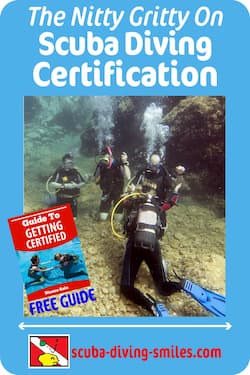

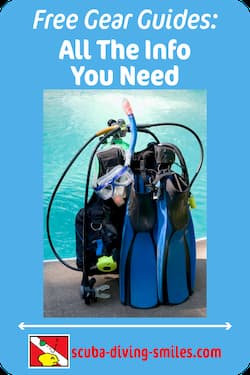

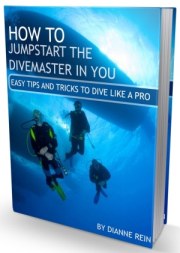


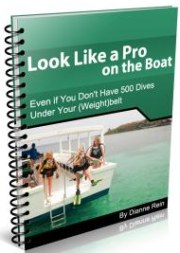

New! Comments
Have your say about what you just read! Leave me a comment in the box below.